Have you heard of prayer plants? They’re called that because of their ability to open and close their leaves on their own, like praying hands.
As one of the most common prayer plants, the Maranta Lemon Lime Prayer plant, also known as Maranta Leuconeura, is popular because of its stunning foliage and color. It’s a great houseplant and does well in a floor planter or even in a hanging basket.
For those who don’t know much about this gorgeous plant, you’re in luck! This blog post will explore all you need to know about the Lemon Lime Prayer plant, its history, and how to take care of this beautiful addition to your home.
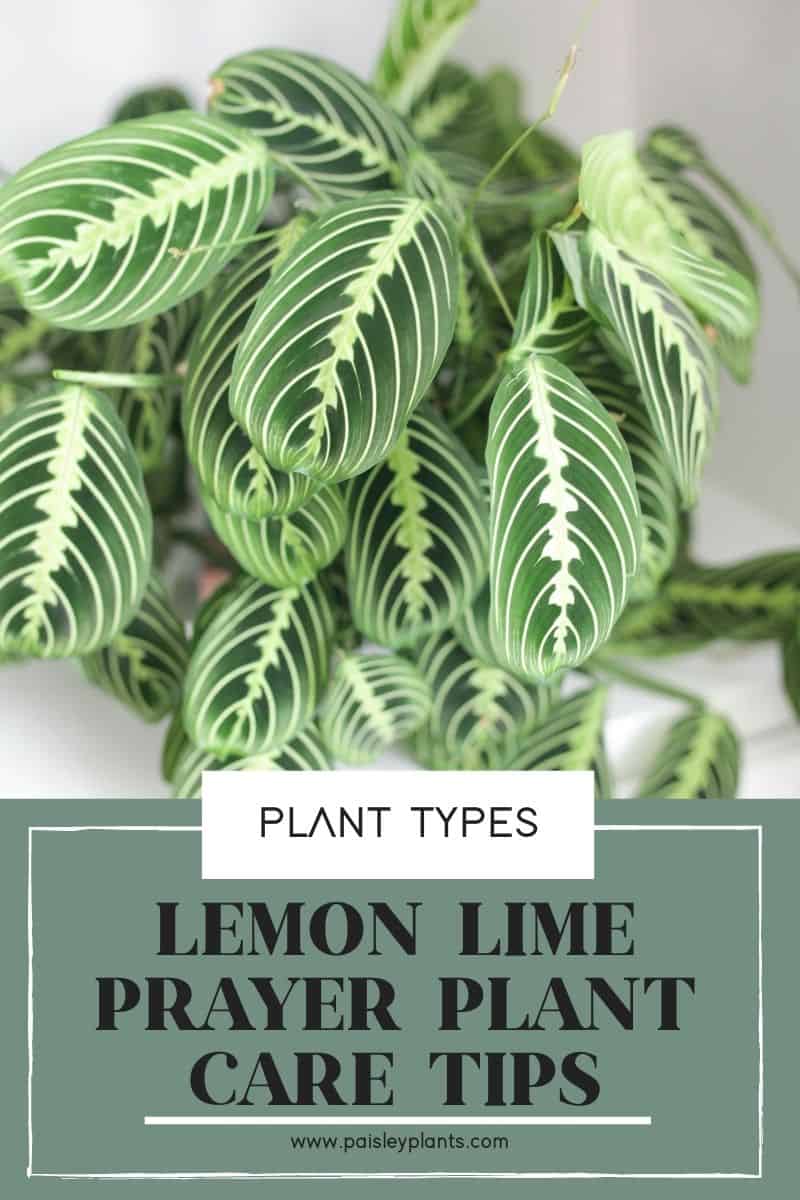
Table of Contents
History & Background
The Lemon Lime Prayer plant is part of the Marantaceae plant family. This family includes the following common plants:
- Maranta Plants
- Stromanthe
- Calathea
- Ctenanthe
Nearly all of the plants from this diverse plant family are native to Asia, Africa, and Brazil. They are known for their ability to pray, or open and close their leaves.
This phenomenon occurs in the morning and at night for most variations of this plant. They will open their leaves in the morning to greet the sun, and close them at night when the sun has gone down. If you’ve seen this event happen, you know how truly unique and awe-inspiring it is to watch.
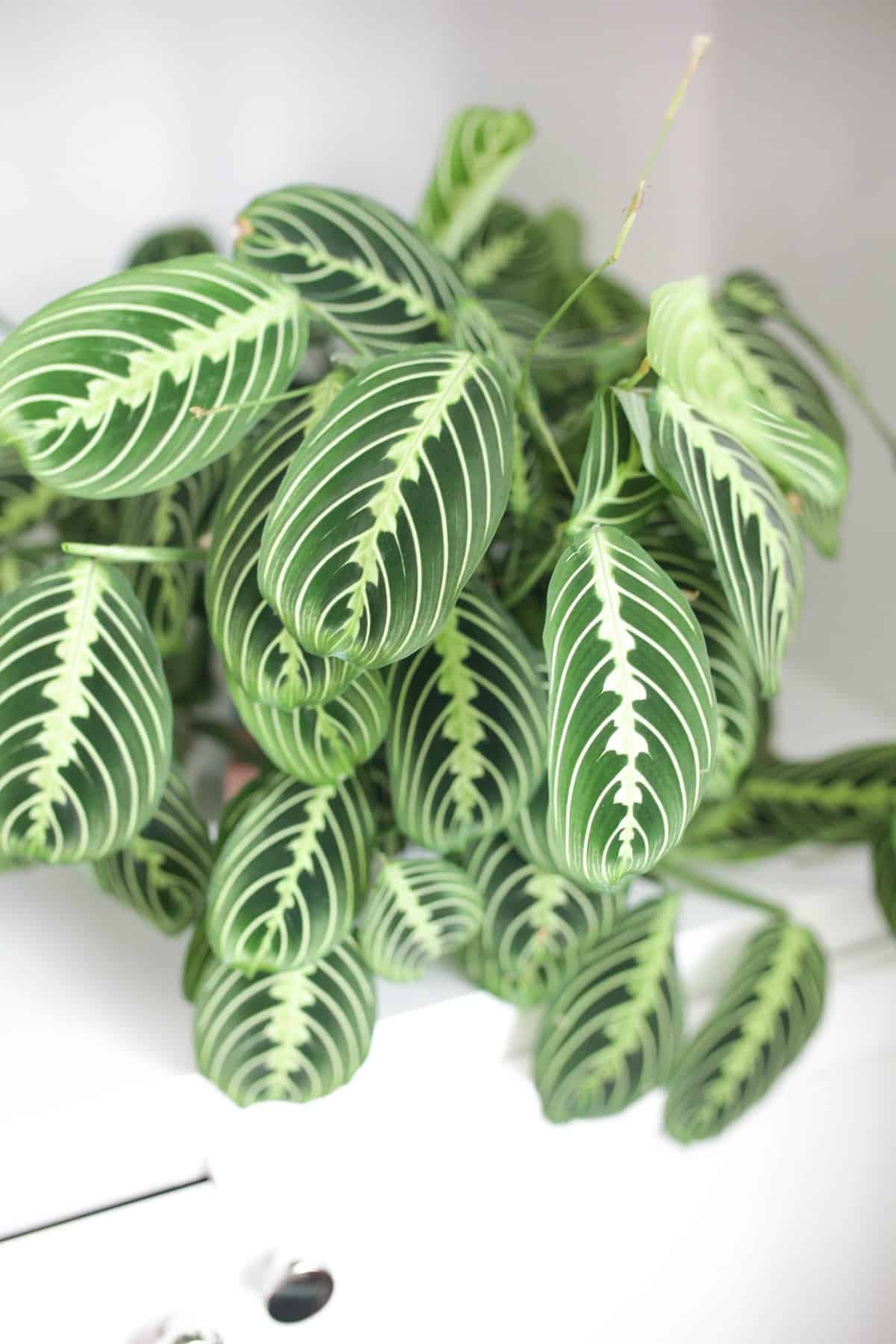
The Lemon Lime Maranta plant does bloom. When it does, you’ll see a beautiful, but extremely tiny, light pink flower. You don’t need to do anything special to make your plant bloom, other than practice patience.
This plant is slow to bloom and grow on its own, but that makes it all the more special to have in your home.
Lemon Lime Prayer Plant Care
Let’s talk about how to care for this plant, where it thrives best, and whether your pets and children are safe around this exceptional houseplant.
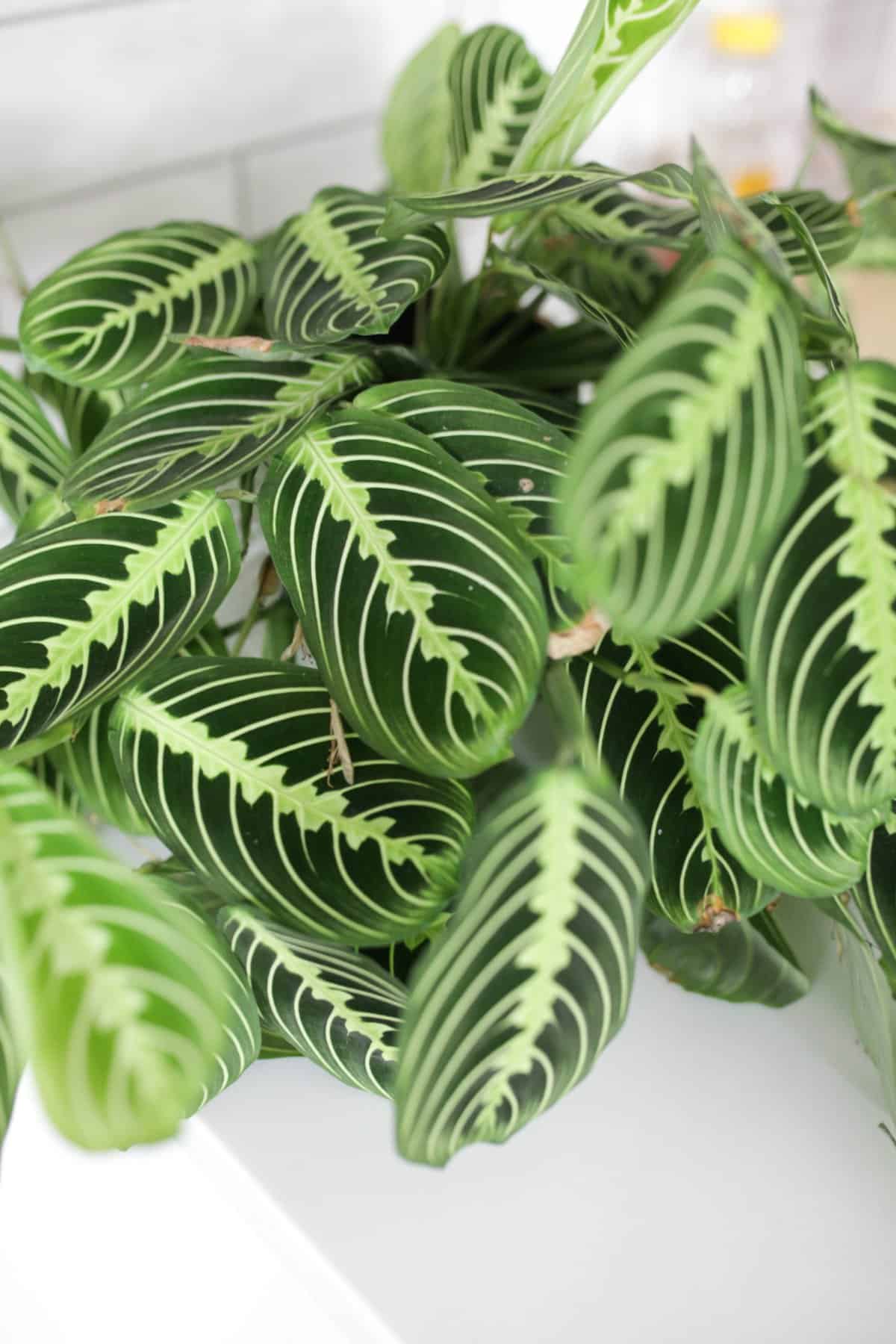
Light
Prayer plants do well in lower light, but it is best to keep these plants in bright indirect light for optimal results. They don’t do well in direct sunlight, which can bleach their leaves and eventually drain the plant of its beautiful color.
If your plant’s leaves start to look a little washed out, you can move it to lower light conditions. This can help it retain some of the color and return to its full potential.
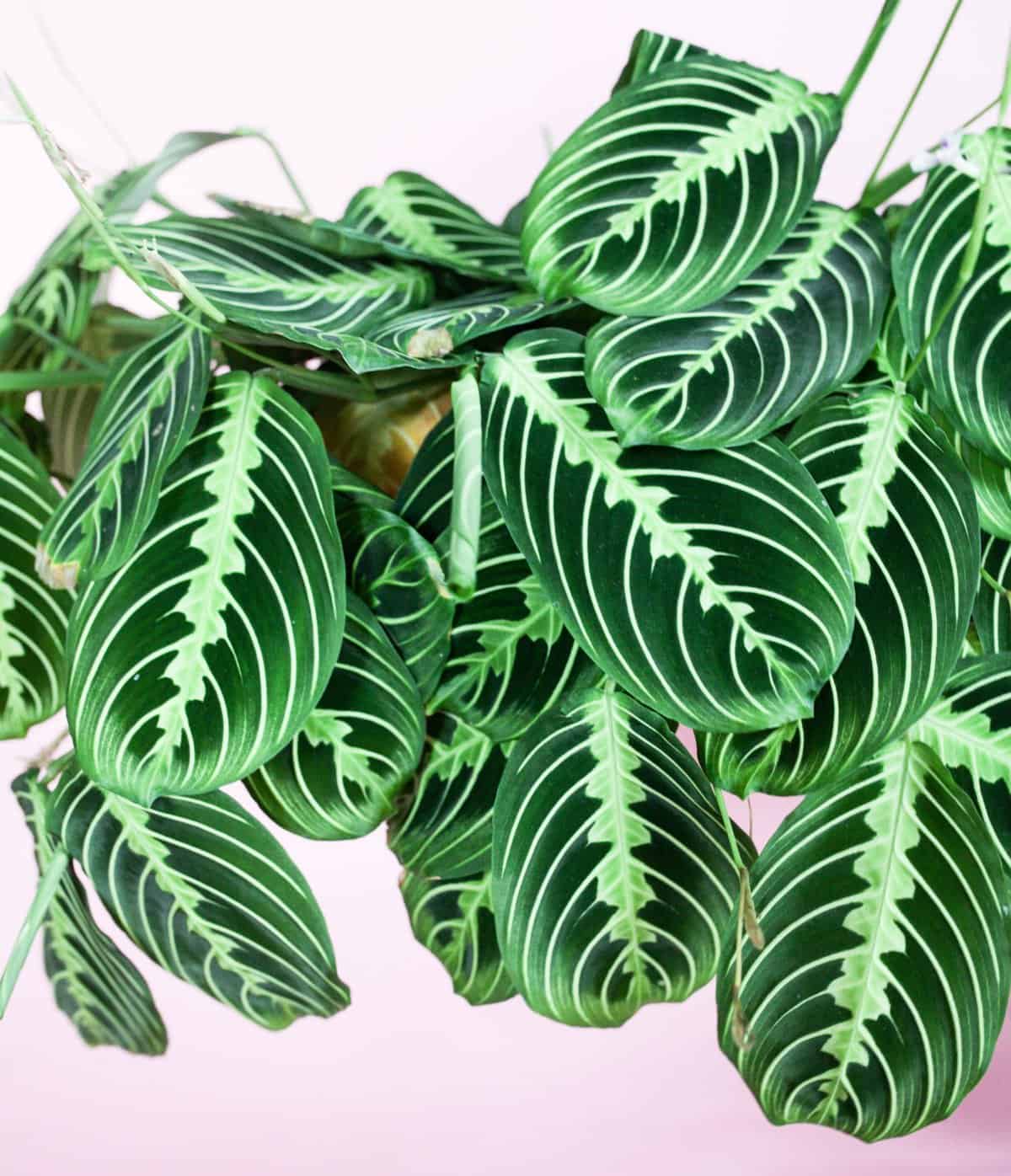
On the other hand, if you find that your plant is suffering and won’t open all the way up in the morning, it’s losing its vital light. Make sure to add more light, and you should find your plant recovering in no time.
Water Requirements
These plants are used to the moist and hot climates of their native Africa, Asia, and Brazil, so giving them enough water is important. They need to always be just barely damp to the touch. It is essential to keep the plant from getting too dry in between watering.
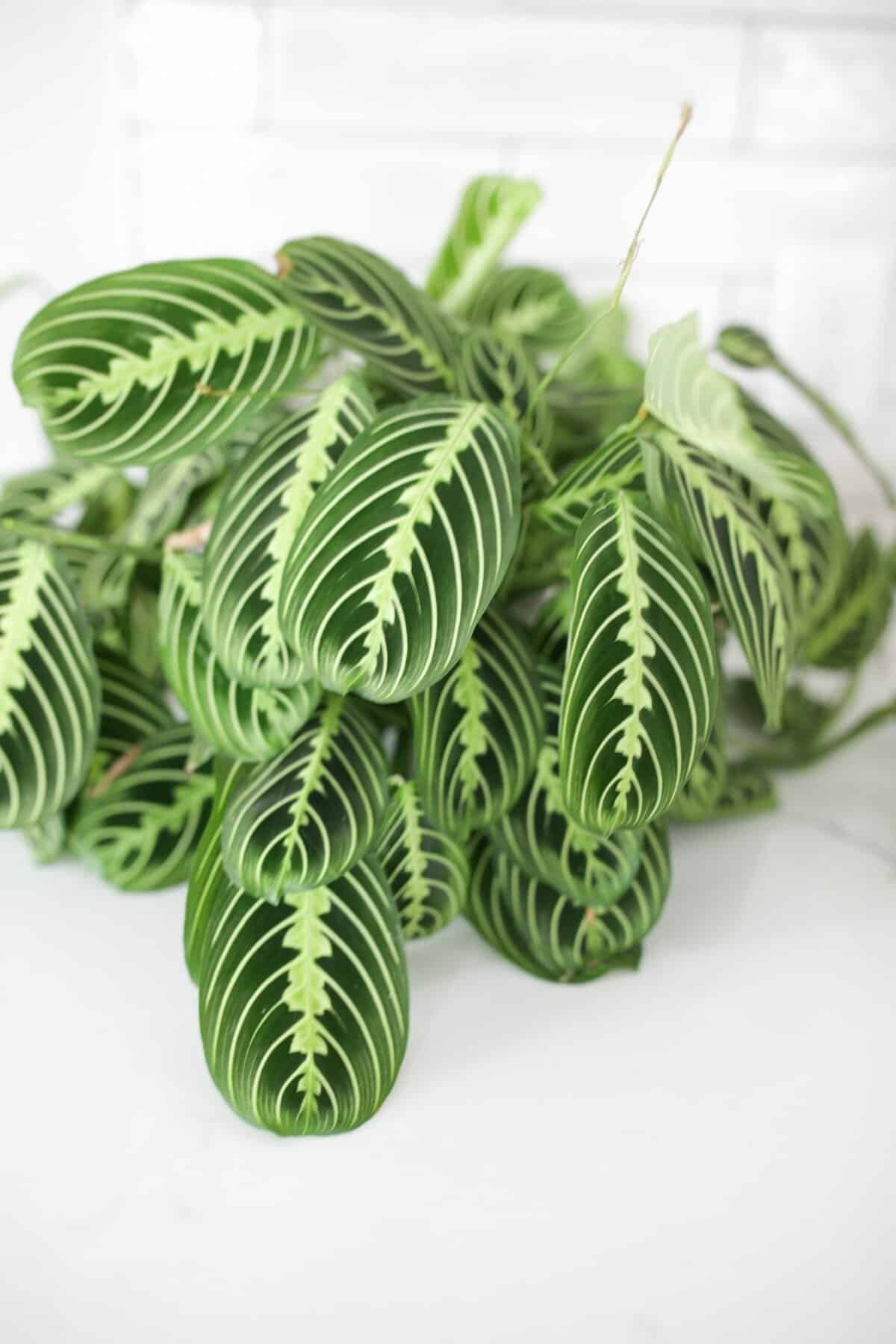
If you can, it would be best to water your plant with warm water or room temperature water. This mimics their natural environment and works better with these plants.
If you use tap water, be sure to let it sit out overnight to neutralize any chemicals. You could also use filtered or distilled water.
It is also key to stop watering as much during the colder months when the prayer plant will not be growing like it does during the warmer months. Always be sure to have a pot with drainage holes so excess water can easily drain out.
Soil
Use a great well-draining soil in this plant’s pot to allow for proper draining. You also need a drainage hole in the bottom of your pot, as well as a tray to collect the water.
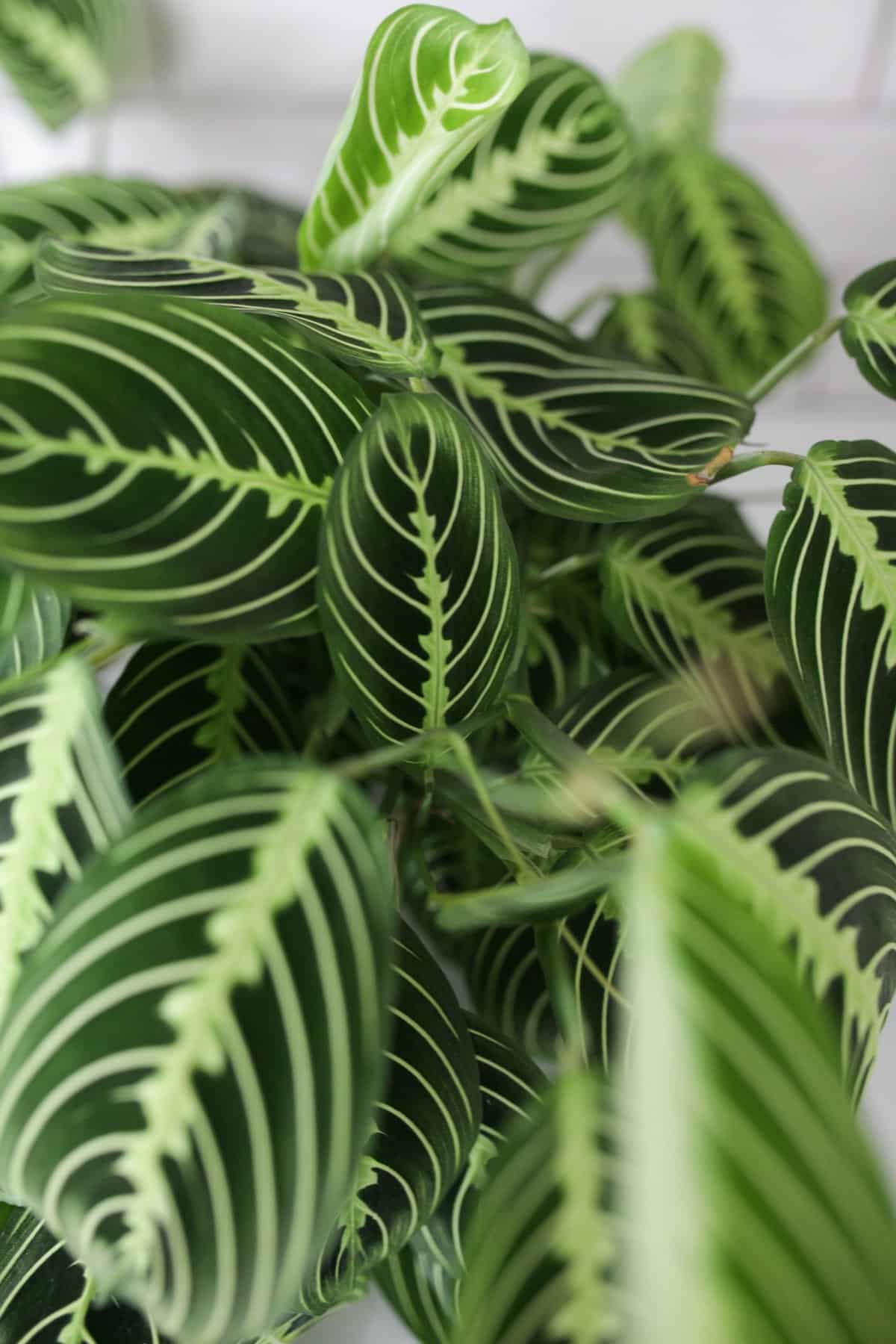
The best planting mixtures contain peat moss, sand, and loam. This helps for optimal drainage. The pots should also be shallow because of the shallow root systems. If the pot is too big, the plant might suffer and not receive the nutrients that it needs.
Fertilizer
Lemon Lime Prayer plants love their acidic nutrients. The best sort of fertilizer to use is one that is water-soluble. Do this at half the recommended amount for every two weeks during the growing season (spring and summer.
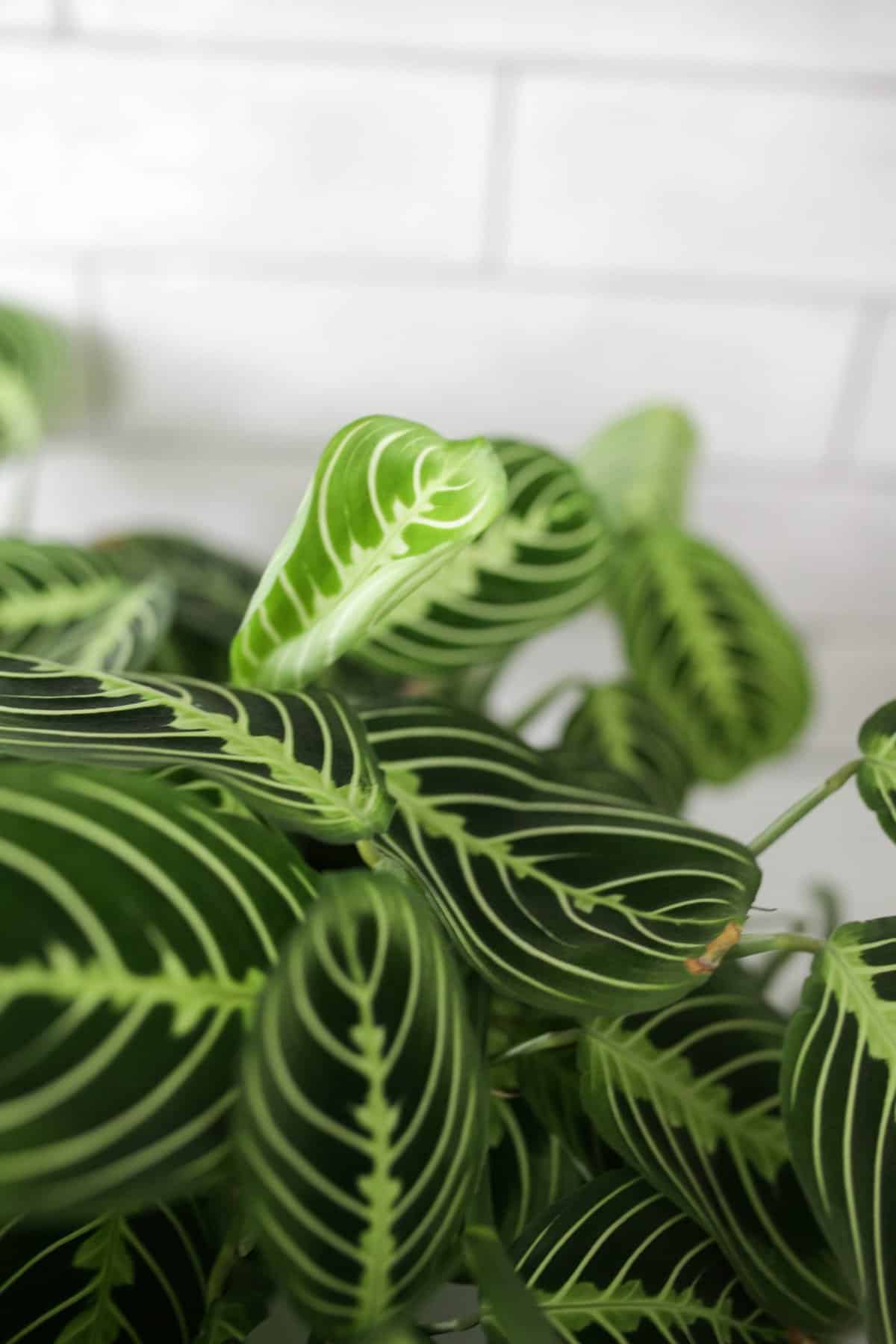
Surprisingly, your prayer plant will also enjoy your leftover tea. This is unique to the prayer plant and can be done sparingly.
As well, it is important not to fertilize in the winter. Your plant will not be growing and won’t use the fertilizer during this time.
Temperature
Keep your Lemon Lime Prayer plant at around 60 to 80 degrees Fahrenheit. This will help your plant stay healthy, and they usually do not tolerate anything less or more than this.
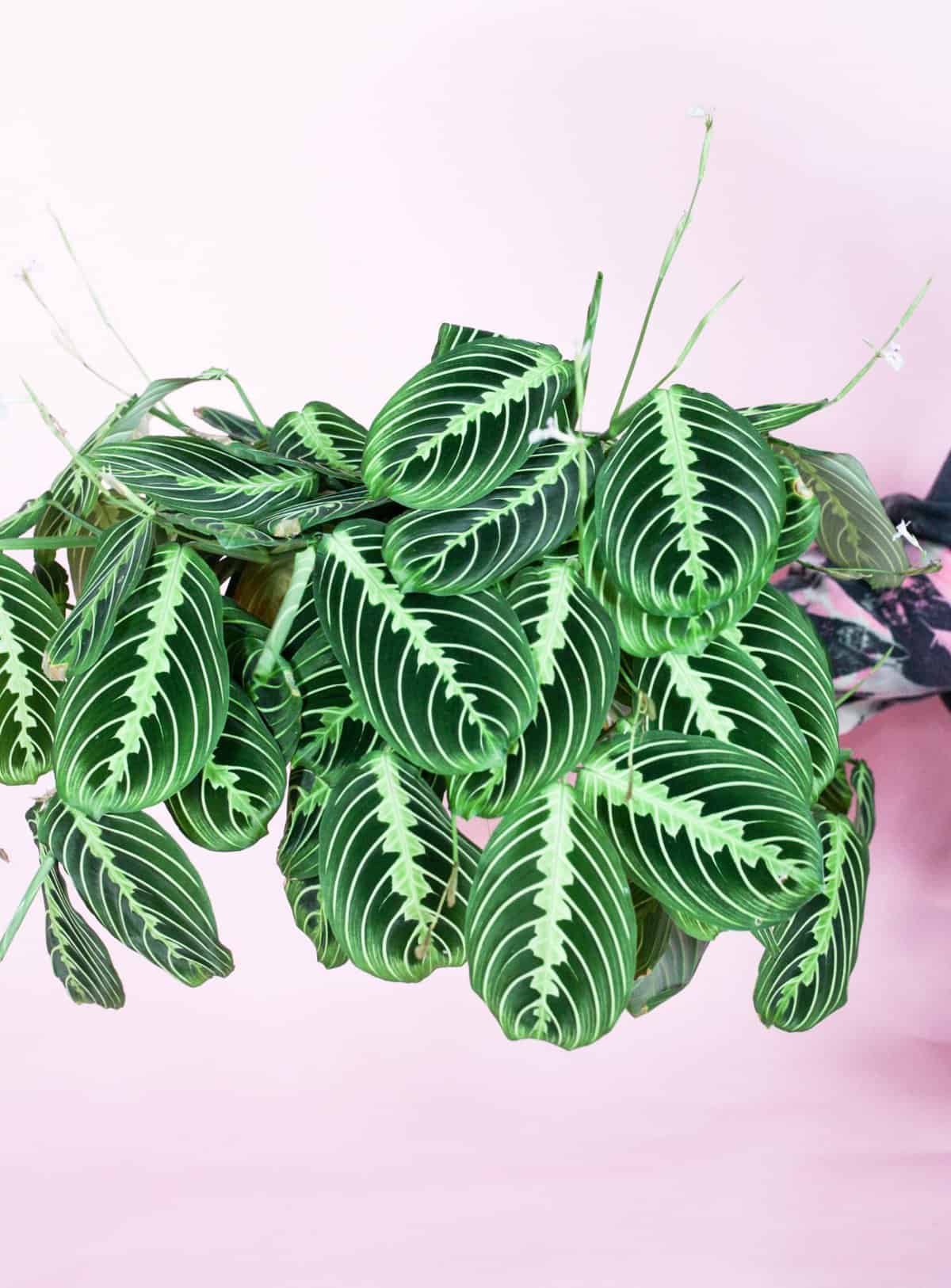
In the warmer months when the temperature is adequate, you can keep this tropical plant outside, but not within the direct sunlight. In the winter when it’s too cold, make sure this plant doesn’t stay out in the colder temperatures.
Humidity
To keep these plants healthy, they have to be kept in the highest humidity possible. Even the humidity of your household can be too little for them. They’ll be their happiest and healthiest if you can keep them near some water at all times, such as in the bathroom or in the kitchen.
Another alternative is to group them with other plants, or to put them on a dish filled with pebbles and water. This helps the plants continue to absorb the water they need. They shouldn’t rest in the water, but rather just above it in order to reap the benefits.
Propagating
Propagation is possible with this plant, and regular pruning is a must to help the prayer plant look its best and promote new growth. Your Lemon Lime Prayer plant will thank you later when you cut back the older leaves in the fall.
Use sharp, clean shears. This keeps the plant clean and makes the distinct cuts needed when pruning.

Additionally, you can propagate for the purpose of repotting these plants. You can divide them when you repot them in the spring rather easily.
You can also use cuttings to propagate if you want! This is what I do and it’s incredibly easy. I prefer to do water propagation and place them in a propagation station.
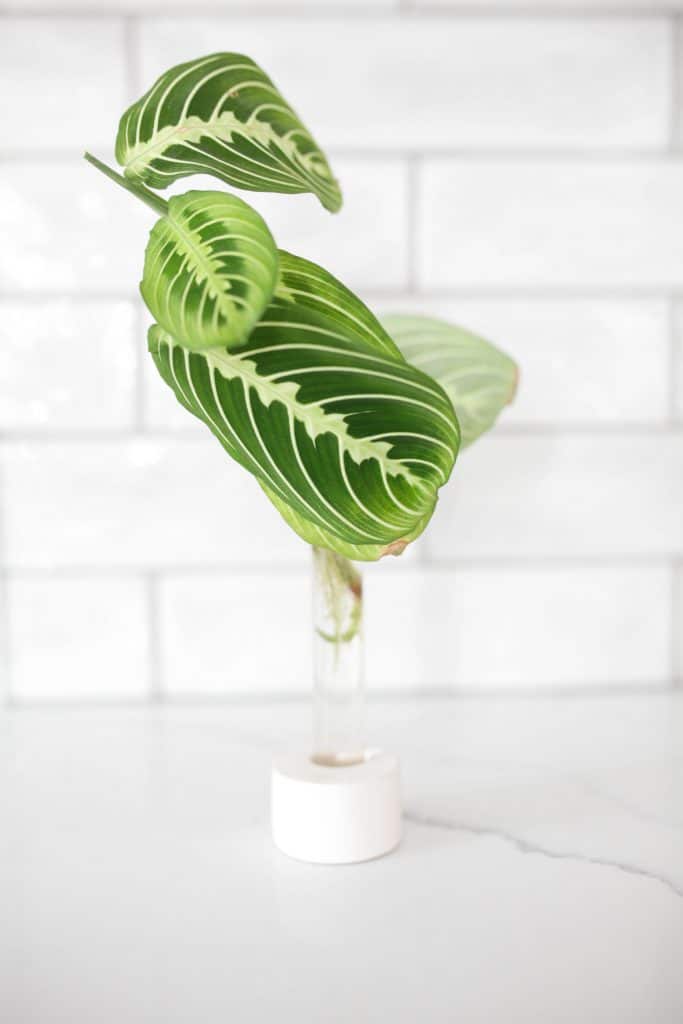
You’ll see roots begin to form within weeks of propagating it. The other thing to do is place these cuttings can be placed in a mixture of coco coir or moist peat and perlite. Then, cover it with plastic to ensure enough moisture.
If you want, you can poke a few air holes to make sure there is enough air. The cuttings should be placed in a sunny spot to ensure proper growth once they have been prepared.
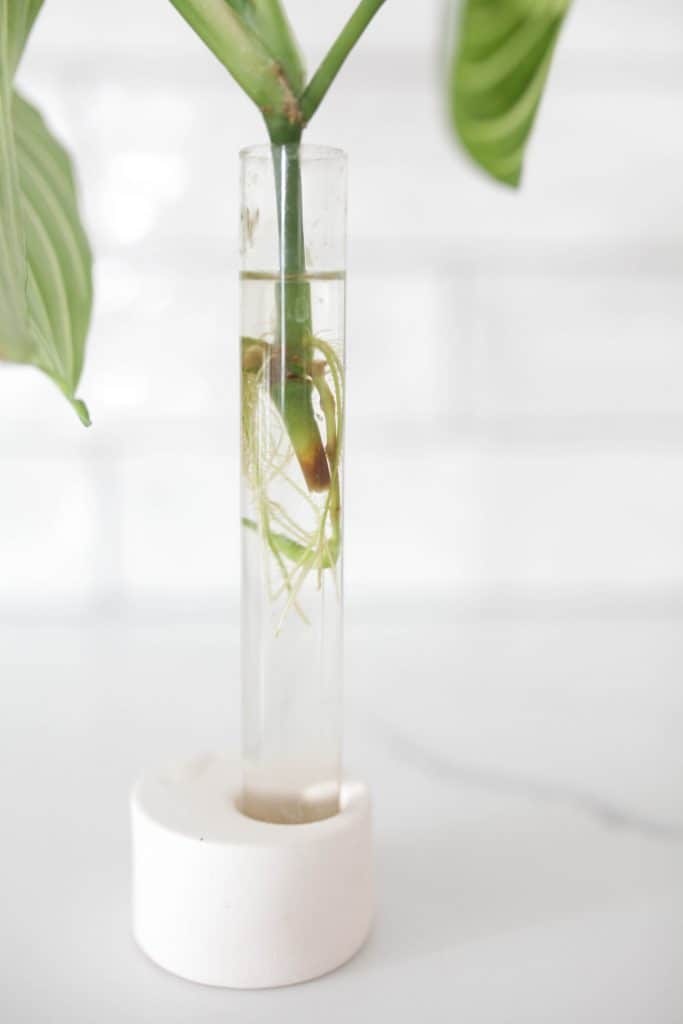
Repotting and Potting
For this plant, repotting is a yearly ritual. You have to do this to prevent the compacting of soil. Repotting keeps the soil loose and gives your plant some fresh nutrients.
You don’t have to follow any particular set of directions to repot the prayer plant, as long as you ensure that the plant is kept healthy and safe during the procedure.
Using shallow pots could be a good idea for this plant due to it’s shallow root system and risk for root rot.
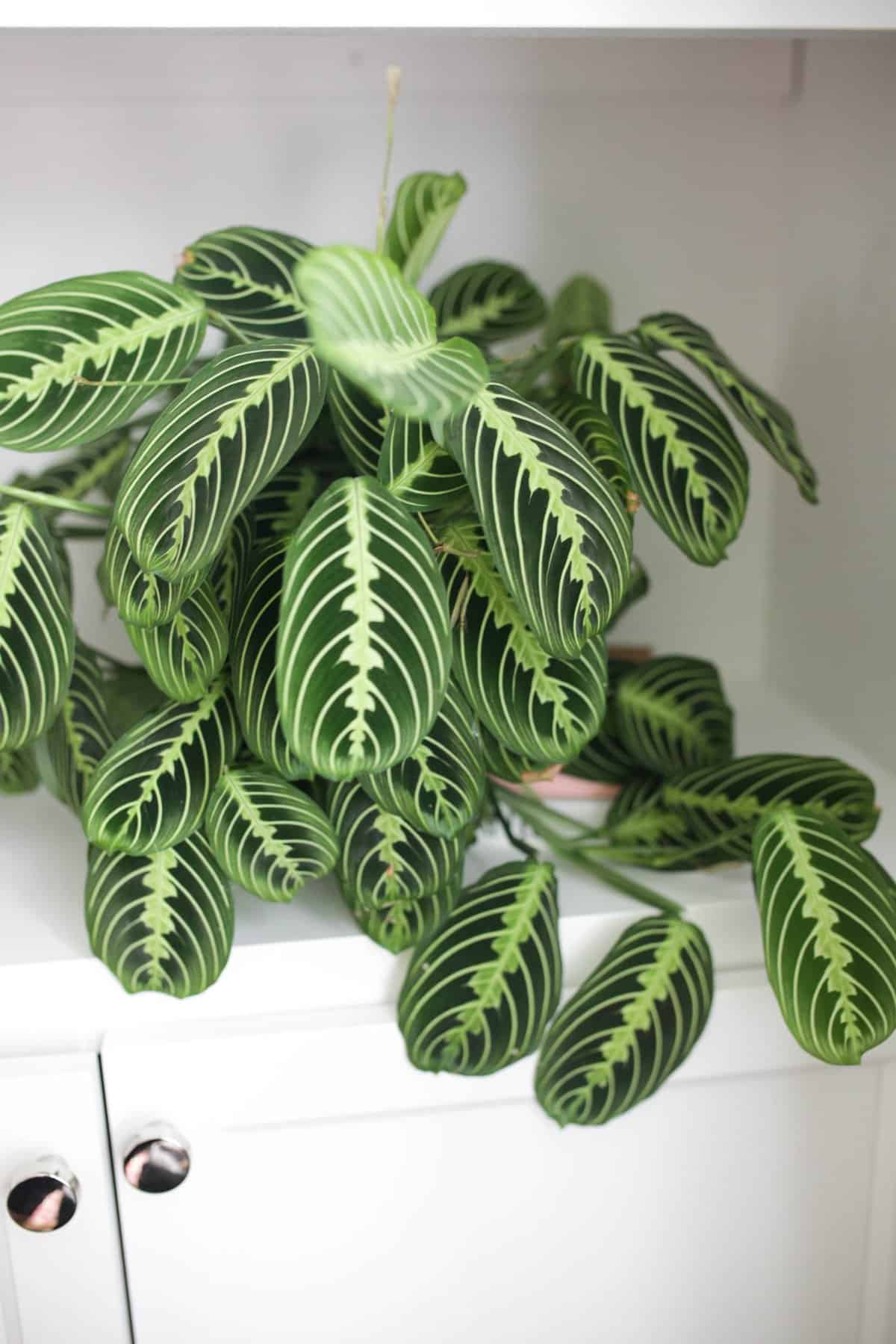
Pests and Diseases
Your Lemon Lime Prayer plant is susceptible to spider mites, mealybugs, brown leaf, and leaf spot. The plant itself can also suffer from root rot if you don’t have adequate draining for your plant in the pot.
Spider mites can develop quite quickly. Once the female lays her eggs, the mites only take up to two weeks to grow, but they also grow faster in the summer months. With this plant in high humidity, the spider mites can’t thrive in the plant’s environment.
To keep them away, keep your plant at the optimal humidity, and you won’t have a problem. If you find spider mites, wash your plant with a strong stream of water and use plant-based oils to suffocate the eggs.
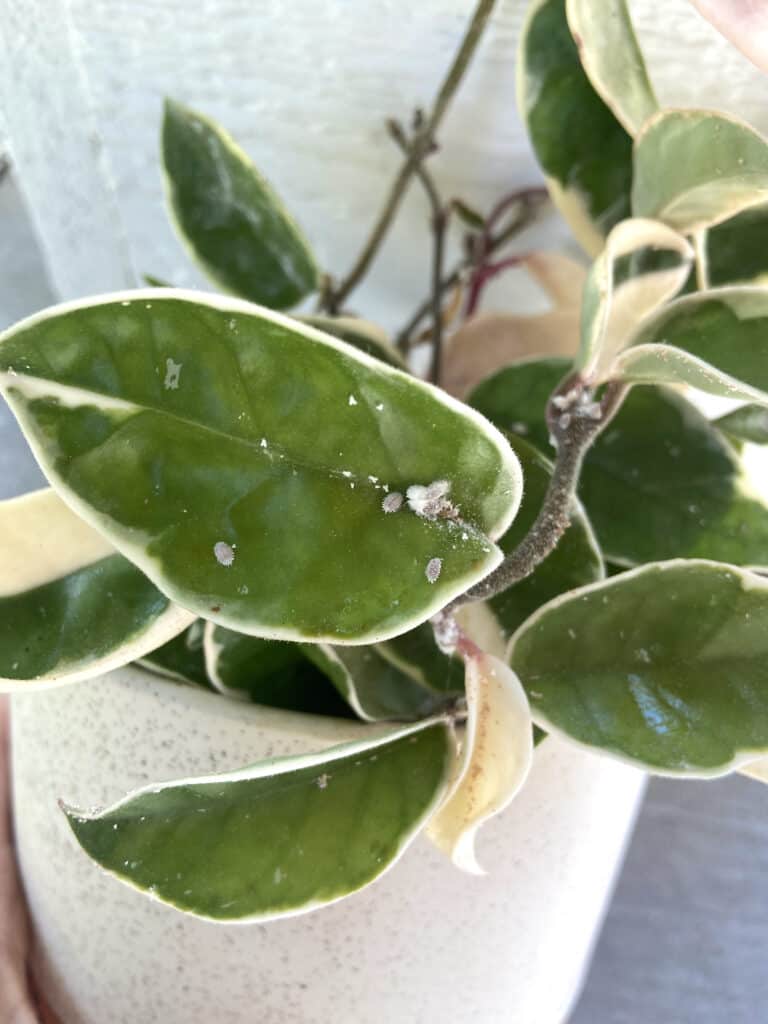
Mealybugs are another concern because they tend to use the sap as their source of nutrients. As long as you catch it early, all you have to do is dab the plant with cotton balls soaked in alcohol.
If there is too much sunlight, your Lemon Lime Prayer plant can also have brown leaf tips. When you notice this problem, take it away from the sunlight and monitor your watering habits. Use filtered water if needed to protect your plant.
Leaf spot is another disease that potentially can hurt your plant. If you don’t treat this, it can kill your Lemon Lime Prayer plant. Don’t let your leaves get wet for too long, and clean then with neem oil if you find this infection.

Finally, the last concern is root rot. This can be another challenge because of the prayer plant’s shallow roots. Just ensure the plant drains properly and trim the unhealthy roots as needed. You may need to repot your plant to save it.
Toxicity
Good news! Your Lemon Lime Prayer plant is non-toxic. This is a great plant for homes with kids and pets, and you can keep them safe while having a beautiful plant to show off to your guests.
Find other low light pet safe plants here and even more cat and pet friendly plants on this post!
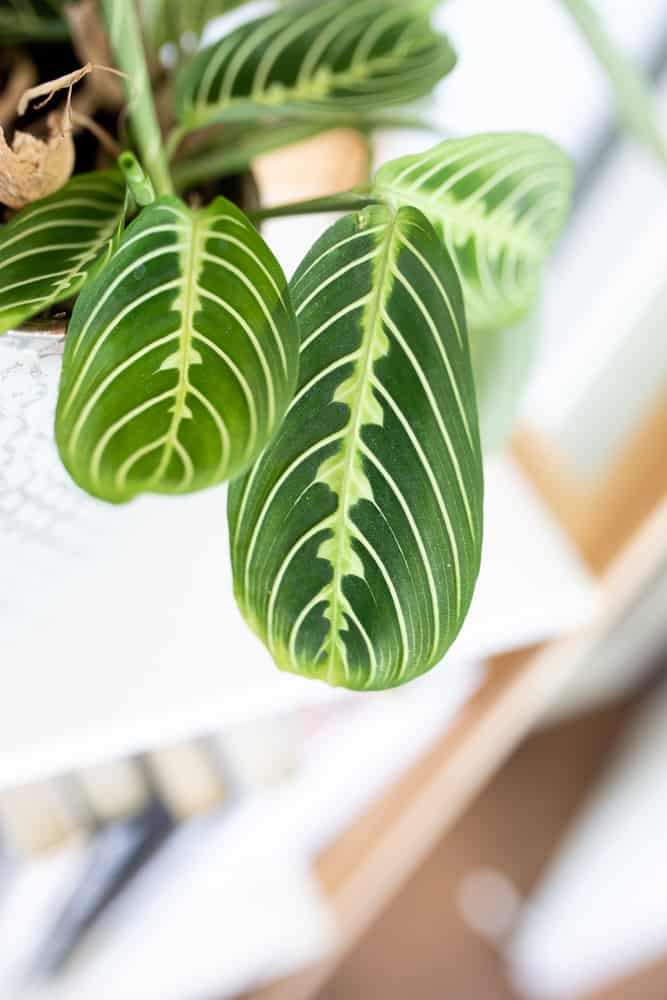
Where to Buy:
Conclusion
The Lemon Lime Prayer plant might be difficult to grow, but it is a stunning and special plant that many want to have in their homes.
As long as you follow these steps, you can have a long-lasting beautiful prayer plant to enjoy for many years.


Thanks for this info. I received it as a Christmas gift and love it. Hope I can keep it healthy. I live in NH.